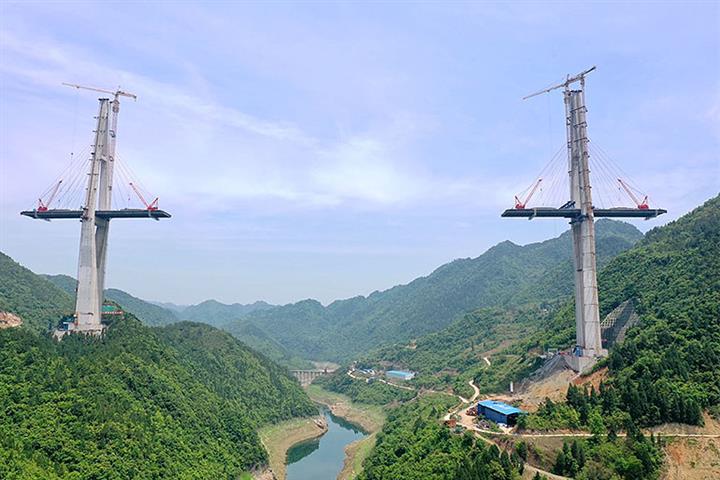 Infrastructure Is Expected to Drive China’s Real GDP Growth by 0.4 to 0.6 Point
Infrastructure Is Expected to Drive China’s Real GDP Growth by 0.4 to 0.6 Point(Yicai Global) March 2 -- The days when China relied on infrastructure projects to boost its economic growth are now history though investment in infrastructure remains the focus of stabilizing economic growth.
The nominal growth rate of infrastructure in the broad sense will probably be between 6.4 percent and 8.2 percent this year, and infrastructure is expected to drive real gross domestic product growth by 0.4 percentage point to 0.6 percentage point.
We expect about CNY1.3 trillion (USD206 billion) of new government funds was invested in infrastructure last year because of more new special bonds, higher public spending on infrastructure and lower local government revenue from land transfers.
The infrastructure sector is likely to bag CNY200 billion (USD31.7 billion) to CNY300 billion of new credit loans this year, given greater support by financial institutions for the real economy. Real estate investment trusts in infrastructure projects may raise a further CNY40 billion to CNY60 billion.
As mentioned, the nominal growth rate of infrastructure in the broad sense will probably be 6.4 percent to 8.2 percent, and the real growth rate after adjusting for inflation is likely to be 2.4 percent to 4.1 percent. Since fixed capital in infrastructure investment accounts for about 15.8 percent of real GDP, infrastructure development is expected to power GDP growth by 0.4 percentage point to 0.6 percentage point.
The State Council, China’s cabinet, raised the concept of new infrastructure in April 2020, which mainly includes the construction of fifth-generation network base stations, ultra-high voltage, intercity high-speed railway and urban rail transit, new energy vehicle charging piles, big data centers, artificial intelligence, and the industrial internet.
We believe that the stimulus afforded to economic growth by new infrastructure should perhaps not be measured only by traditional methods, and that its contribution to economic expansion is increasing.
Most investors in new infrastructure projects such as AI, big data centers, and NEV charging piles are private companies, and the size of investment is limited. State-owned enterprises are expected to join the private firms this year to boost the sale of investment in new infrastructure.
Compared with traditional infrastructure, new infrastructure will boost the recovery of the downstream manufacturing industry and consumption by raising economic efficiency and speeding up industrial digitalization.
(Cheng Shi is a chief economist with ICBC International Holdings, and Gao Xinhong is a macroeconomic analyst at ICBC International.)
Editor: Peter Thomas